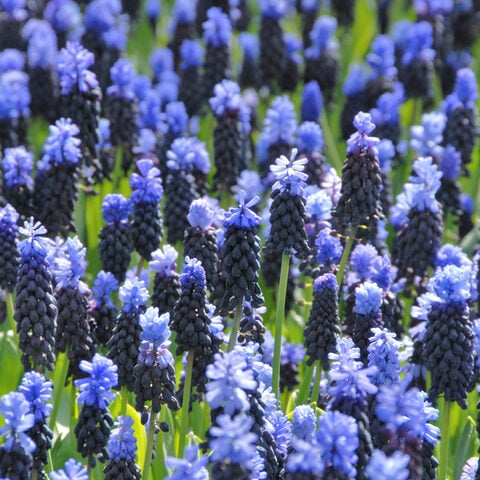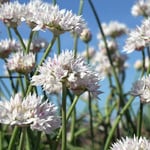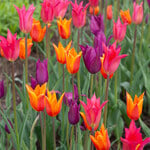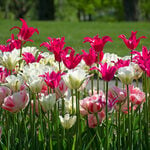How to Plant and Grow Bulbs
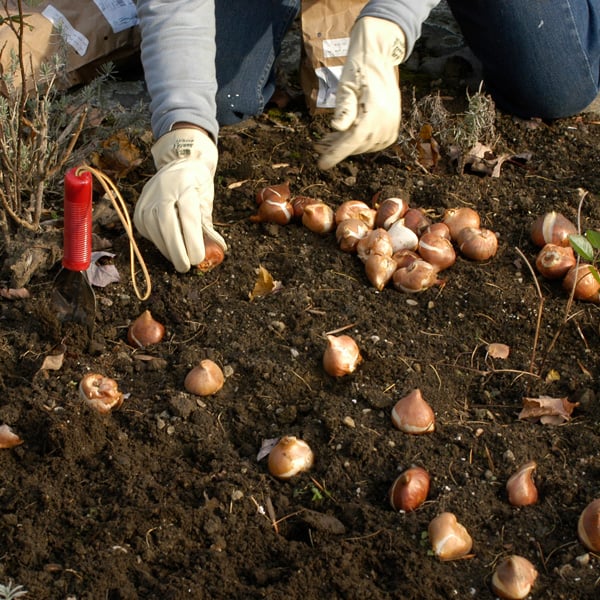
We offer a variety of both spring-blooming and fall-blooming bulbs at White Flower Farm. Spring-blooming bulbs includes such favorites as Daffodils, Tulips, and Hyacinth which are planted the preceding fall. Our fall-blooming bulb selections include various species of fall-blooming Crocus and a few more that are planted in the fall.
Bulbs are easy to plant as long as you follow the basic guidelines outlined below. Fall-planted bulbs may be the easiest plants you'll ever grow; each contains next spring's flower already tucked away in its heart. Planted this fall, when temperatures have cooled (6–8 weeks before the ground freezes in northerly climes), the bulbs will produce roots as this year's garden fade away. They'll be ready to burst into bloom as soon as winter retreats–or even earlier, in a few cases. With a little planning, it's possible to orchestrate a sequence of blooms that last for several months and overlap the early perennials for a stunning spring display. For most bulbs, the show is beautiful the first year–and keeps getting bigger and better in the following springs.
Well-Drained Soil
With very few exceptions, bulbs require soil that drains well all year long. To improve the drainage of heavy soil, dig in organic matter such as compost, aged manure, leafmold, peat moss, or (in the South) shredded pine bark. If you garden in very heavy clay, consider constructing raised beds to provide well-drained conditions.
How to Plant Bulbs
With a trowel or a bulb planter, dig a hole to the depth indicated on the plant label (use the label, which is 6in long, as a rough measuring stick). Set the bulb in the hole with the roots or the remnants of roots pointing down. Some bulbs—Spanish Bluebells, for example—don’t have visible roots but have a pointed or tapered top, which should be planted facing up. After you’ve placed the bulb in the hole, fill the hole with soil.
Planting Bulbs in Pots
All of our Bulbs will happily grow in pots with drainage holes. Bulbs grown in large, deep pots should be planted at the recommended depth. In small pots, plant bulbs at half the normal depth. You can overwinter fall-planted bulbs in containers outdoors in milder climates or in a cool, protected location such as an unheated garage or shed in colder climates.
Watering Bulbs
Although there may be no sign of life above ground, bulbs begin sending out roots soon after planting—as long as the soil is sufficiently moist (and cool). Unless you expect a soaking rain within a day or two of planting, we recommend that you water thoroughly after you plant. Water newly planted bulbs again only if rainfall is scarce. Once established, most want ample moisture— 1/2 to 1" of rain per week—while in active growth (which begins in fall, slows or stops in winter, and resumes in late winter or early spring) and require soil that is on the dry side during summer dormancy. Do not plant bulbs near soaker hoses, sprinklers, or automatic watering systems.
When to Fertilize Bulbs
The best time to fertilize bulbs is in fall, when they are sending out new roots. The next best time to fertilize is in early spring, just as the foliage begins to push through the soil. Heavy feeders such as Lilies and hybrid Tulips perform best if fertilized in both fall and spring. We recommend using a slow-release fertilizer formulated especially for bulbs, such as a granular Daffodil fertilizer. It’s an easy matter to apply the fertilizer to the surface of the soil (not in the planting hole) above the bulbs after planting and then every fall thereafter. We do not recommend using bone meal. It contains only one primary nutrient (phosphorus) and attracts dogs and rodents, which may dig up the bulbs.
Bulb Bloom Time
The bloom times printed on our labels are typical of bulbs grown in Litchfield, Connecticut. Where spring comes earlier, bloom will generally be earlier. Likewise, in colder climates, flowering will be delayed. Please note that the first spring after planting, most bulbs (particularly those imported from cool summer climates such as those of Holland and England) bloom later than established bulbs of the same variety. This is not unusual. In subsequent years, they will bloom at the appropriate time.
How to Care for Bulbs After Blooming
Most of the bulbs we offer go dormant within about 8–12 weeks after flowering. The period between the end of flowering and the withering of the foliage is crucial to the future vigor of the plant. If you cut, fold, or braid the leaves before they have yellowed and collapsed, you may prevent the bulb from storing the energy required to bloom the following year. You can hide curing foliage by interplanting bulbs with leafy perennials such as Hostas, Daylilies, and Ferns or with annuals or ground covers. If you plant bulbs in a lawn, do not mow the grass until the bulb foliage begins to yellow.
The best time to move or divide bulbs is when their foliage has all but withered, signaling the end of active growth. Lift them with a digging fork or a spade, taking care to avoid injuring the bulbs, and replant them immediately at the same depth and about three times their diameter apart.
Prechilling Bulbs in Mild-Winter Areas
In parts of the country where winters are mild, certain bulbs may not receive enough natural cold to stimulate proper growth and flowering. We recommend treating these as annuals and replacing them with new bulbs every year. Check with your local USDA Cooperative Extension Service to find out whether any bulbs require prechilling before planting in your area. Place the bulbs in a refrigerator, away from fruits and vegetables (these produce ethylene gas, which harms the embryonic flowers inside the bulbs). Make sure the bulbs remain dry. The usual prechilling time is 8–10 weeks at 40–45°F. Once the bulbs are removed from cold treatment, plant them right away. Bloom occurs about 6–8 weeks after planting. Discard the entire plant after bloom.
Favorite Spring Bulbs to Plant in Fall
Daffodils are the first large flowers of spring with their bright colors especially welcome after winter's dreariness. Deer-resistant and long-lived, most varieties continue to multiply for years, even decades. Some are fragrant, especially the Jonquils. To extend the bloom time, try the earliest Trumpets followed by the midseason Large-cupped, then the later blooming Poeticus varieties. The Works has examples from all these groups, if creating your own mix seems too daunting at first.
But Daffodils aren't the first bulbs to appear. Especially if you live where winter seems endless, try adding at least a few handfuls of the early blooming bulbs that will remind you spring is on its way. Galanthus (Snowdrops), Crocus chrysanthus, and Iris reticulata are small, but they create a big impact when nothing else is blooming in the garden. These bulbs are tiny and even several dozen can be planted in no time at all. Choose a spot you're likely to see every day, such as near your main entry or a flower bed you can see from a kitchen window. We guarantee that a few months from now, you will be delighted you did.
These little beauties are soon followed by Chionodoxa (Glory-of-the-Snow), Anemone blanda, Crocus vernus (the larger Dutch Crocus), Erythronium, Hyacinths, Muscari (Grape Hyacinths), Scilla, and species Tulips. We have mixtures of many of these varieties, which provide maximum diversity of color and form to make your selections easy.
Overlapping this second group are various Fritillaria, Leucojum (Summer Snowflake), and Narcissus (Daffodils). The large-flowered Tulips, such as the Darwin Hybrids, tend to bloom along with Daffodils, making them fine companions. The distinctive and elegant Lily-Flowered Tulips, with their graceful stems, usually provide the swan song of spring-flowering bulbs. The Hyacinthoides (Bluebells) transition to the first flush of early summer perennials, followed by the fragrant Lilies of summer.
Have fun choosing a color theme, or exuberant mixes of hues and varieties. Even a few dozen bulbs will cheer you next spring, before your perennials are barely discernible tufts of green.

